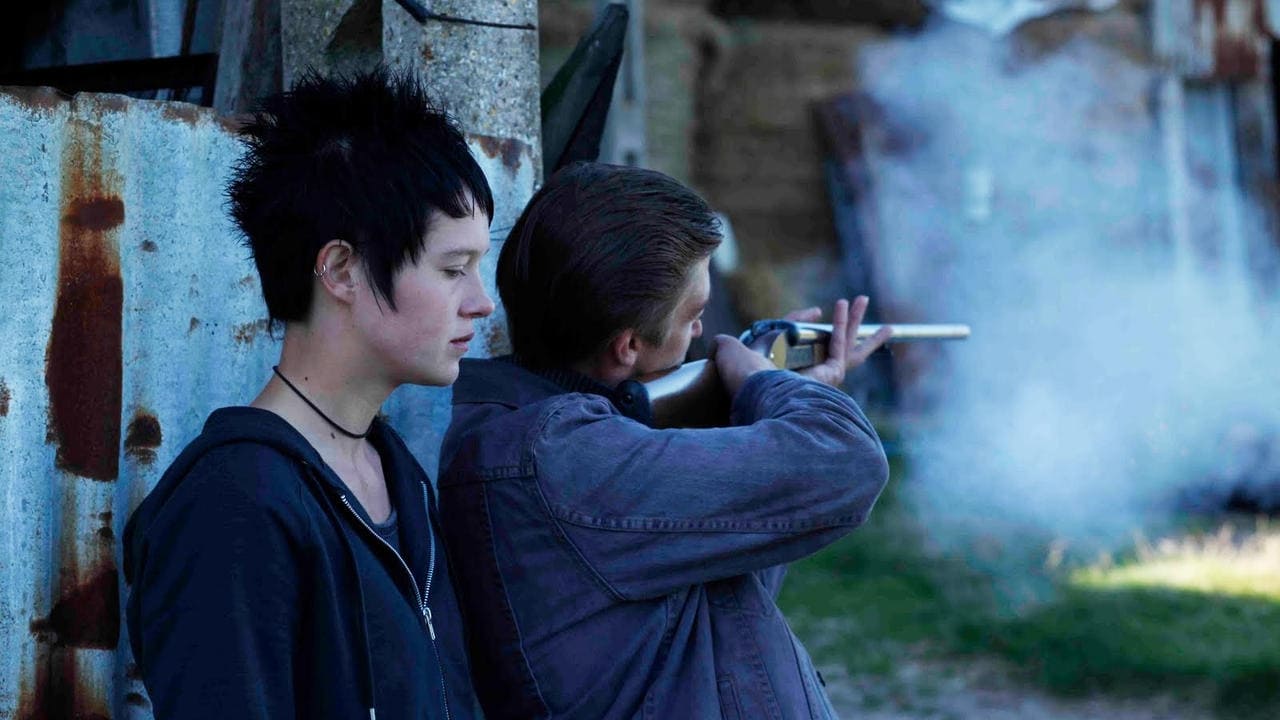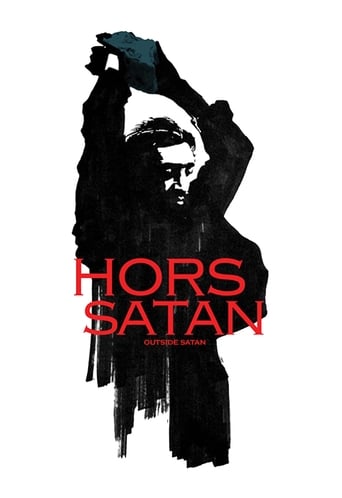Jeanskynebu
the audience applauded
NekoHomey
Purely Joyful Movie!
KnotStronger
This is a must-see and one of the best documentaries - and films - of this year.
Stephanie
There is, somehow, an interesting story here, as well as some good acting. There are also some good scenes
paperbackboy
Much has been written about the role of the environment in this film. Rarely can natural (and outwardly naturalistic) settings have been so crucial to the action and ambiance of a movie. Manhattan springs to mind as another work in which the setting functions almost a key character (bet you didn't expect to see a comparison with Woody Allen in this review).The director forces the audience to see something explicitly religious (and in the case of the guy, Christ-like) in the two leads, by depicting overt religious symbolism in their actions and gestures. There is nothing simplistic in this portrayal, however: the characters' actions are always underpinned by a faint whiff of shamanism, nature-worship or even downright satanism, bringing a delicious - and potentially controversial - complexity to the film.The action appears to take place outside the modern world, or at the very least parallel with it (I referred to the "medieval" atmosphere evoked by Dumont's work in another review, and Hors Satan is a little like that too). In this strange parallel world, the police, for example, don't act as expected - in fact, nobody acts as expected. Despite the slow pace, however, I never got the feeling that the story was not moving forward (and I'm baffled by the failure of one reviewer to identify any storyline at all).Much of the tension lies in the audience's fear - of what the characters will do to one another and to the landscape, of what the consequences of their actions may or may not be, and of what the movie's ultimate outcome will be. It is this elemental drama that drives the film forward - in a slow-burn movie in which death accounts for an amazingly high proportion of the "action" that actually does take place, life and death are in the balance in an extremely immediate and terrifying way. The central Christ-like character can be violent, and his actions incomprehensible, perhaps reminding us that Christ was himself capable of unexpected violence (for example when throwing the money-lenders out of the temple). Although of course the director also leads us towards a view of the lead character as a Satanic figure, particularly in one almost unwatchably horrible scene.Perhaps the central achievement of this film - by an apparently atheist director, remember - is to have created a powerful drama with a complex Christ-like figure who reflects the mysticality and profound unknowability and yet the intangible magnetism of the original biblical Christ, while incorporating elements of the satanic into the character too. A difficult comparison for Christians to swallow, though.
Neven M. Agalma
We could extract many elements out of this movie, and focusing only on one philosophical aspect/thought sequence right now, sequence with certain 'ethico-religious' consequences, the following comes to our view: one thing which is recurring and like a repeating cycle overwriting itself, a "constant" through the film, is the perpetual and persistent "gaze" of the main protagonist.The gaze somehow in its element of "gaze as such"/the pure gaze, transcends the limits of "particularity" and connects itself correspondingly with the vast and vacant environment, the mountains or trees or the sun on the horizon etc. Those visual fields are the approximation to this pure gaze, which just gazes, absorbs the various elements in itself, enveloping the whole environment and making it extinct in the "act of the gaze", somehow dislocating itself from/through the "particular" to connect itself with the "universal", like the empty canvas which contains all the colors and contours of the picture; the gaze remains like this empty canvas, which is somehow beyond "good and evil", in a sense, it is the indifferent element, which takes both good and evil as the same and interchangeable - the pure gaze appears as if untouched by different particularities or the content which it will process along the way. Could this "hors-satan-gaze" be the pure gaze of the (pure) consciousness, the spiritual tradition is talking about? In various religious traditions there are divine madmen, who appear crazy, to whom the moral standards don't apply anymore, to whom the codes of normality, the rigid distinction between good and evil is just useless and a sign of fear and conformity. Is the main protagonist of the movie this kind of divine madman? Could be. Is his perseverance to do what he has to do (without obvious and self-evident reasons behind his actions), at the specific junction of the action/happenings that take place, a certain "death drive", drive that goes beyond life, beyond the safe and life-preserving functions; does that make him diabolical for that reason? Could we link his character, for example, to the characters like Bobby Peru (played by Willem Dafoe) from David Lynch's "Wild at heart" or maybe crazy Anton (played by Javier Bardem), the Coen Brothers movie "No Country for Old Men"? In some sense all those characters appear stronger than the Life itself, driven by a sort of pure Death drive, not minding the consequences, like strange impersonations of the apocalyptic figures that destroy what needs to be destroyed along the way (by some unfathomable self-will), but at the same time confront us with radical truths which remain hidden to us, or better, the truths "we don't want to know anything about them". Are they divine figures that confront us with our own devils? It is to be answered individually. What is more diabolical, the action itself, good or bad, or the "gaze as such" which is witnessing both? In a sense, this gaze remains intact and 'pure' by the good or bad input; it accepts them both. Isn't this the perversity of the gaze itself, to be indifferent, to take upon itself whatever it comes, without any distinction? If we say that one person is good or bad, we say this according to the standards of what is good and bad action; action needs to be done so that we can retroactively evaluate if the person is 'good' or 'bad'; only when the action is done we can say, that this person has decided (though it can/could be theoretically 'predetermined' by the causal chain events) to act according to his 'eternal' nature, which shows its "eternal character", only through particular actions that someone takes upon through the course of life.In the instances of "Hors Satan" characters, it appears as if they evade this logic and are the subjects which freely rearrange the parameters of life, as if by a bizarre strike of "deus ex machina" intervention, and thus change completely the scenery and current events by dropping down the unbearable truth of confronting us with our worst nightmares and casual fears. They are certainly not the universal remedy, but they bring a certain perspective which pushes the ordinary reality to its borders, forcing us to rethink the thin lines between good and evil.
Howard Schumann
Set in the Côte d'Opale region of Southern France close to a river and marshland, an enigmatic loner referred to only as "The Guy" (David Dewaele) stays alive by poaching and building fires. A girl from a nearby hamlet also unnamed and known as "The Girl" (Alexandra Lematre) is drawn to him, feeds him, and provides companionship and they go on long walks together. Controversial French director Bruno Dumont's latest film, Hors Satan, is a puzzling, excruciatingly slow, meditation on the nature of good and evil and whether Christ and Satan could be two sides of the same coin. As the film opens, The Guy and The Girl meditate together in the open fields and pray together at the edge of the ponds, though it is not clear to whom they are praying.There is no physical relationship, though The Girl seems to want it. There is little dialogue and the only sounds we hear are the ambient sounds of nature. The Girl follows The Guy without question and doesn't raise an eyebrow when he kills her stepfather whom she claims is tormenting her. "He won't ever bother you again," he says. The police investigate but no one is arrested and the couple remains emotionally detached from what is going on. The Guy's actions are morally ambiguous. Presumably to enhance their redemption, he clubs animals to death and severely beats a guard (Christophe Bon) who wants to get close to The Girl.He is also a healer, however, as demonstrated when he restores a catatonic girl to life, but a grotesque sex scene with a camper borders on the unwatchable and raises more troubling questions about who he really is. While no meaning is attached to events, the film appears to be saying that good and evil are not mutually exclusive, that one can contain the other but its meaning seems muddled. The Guy may be Christ who has returned as a lion rather than a lamb, or then again, he may be Satan, or a combination of the two. Dumont's premise follows the tenets of religious orthodoxy postulating the existence of the Devil, but what he really seems to be asking is whether or not the end ever justifies the means.In other words, does it matter what kind of methods you use if a desirable result is achieved? Apparently The Guy does not think it does. While Hors Satan contains many biblical allusions such as walking-on-water and resurrection and speaks the language of metaphysics, the film is hardly a spiritual experience. In Carl Dreyer's Ordet and Carlos Reygadas' Silent Light take on similar material, there is beauty, poetry, and humanity, significantly absent in this often violent film. Dumont once told an interviewer that "you don't have to be civilized in the movies, only when you come out of the theater," and said that "to be civilized you have to have the experience of barbarism." Although the film falls short of barbarism,it is mostly an unpleasant experience with scenes of in-your-face ugliness, and I didn't feel any more civilized when I came out. Dumont says that his films are a slap in the face to get the audience to wake up. While this is a commendable goal, judging from the response of the sparse audience in the showing I attended where half of the audience walked out and the other half fell asleep, it seems as if the viewers may have failed to get the message. Dumont once said, "I'm not indifferent to the public. I will end up being a filmmaker for big audiences, I may be 70 by that time, but I will get there." If Hors Satan is any indication, he may get there, but it won't be in this lifetime.
Vladimir Novikov
Avant-garde movie exploring issues of good and evil, their interdependency, and transformation of one into the other. The pace is extremely slow and script mostly uneventful, so that viewer could focus on the truly meaningful scenes. Landscapes of Northern France along with visual and sound techniques are intended to capture viewer's attention during long scenes of walking amidst green scenery that take large part of the running time. Yet movie's overall slowness, which could be an allegory for mundane daily life of an average person, provides good counter-balance to several naturalistic scenes that are intense, and even shocking. The dialogue is scarce, which also serves to illuminate important plot twists. It is obvious why general public might not like the movie, however I enjoyed it at TIFF11 and my biggest regret is not being able to stay for the Q&A session with director Bruno Dumont after the screening.

